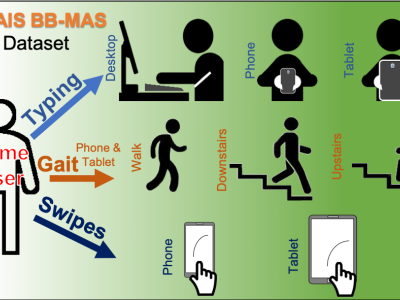Fiber

- Citation Author(s):
-
Lei Huang
- Submitted by:
- Lei Huang
- Last updated:
- DOI:
- 10.21227/mk06-r577
 47 views
47 views
- Categories:
- Keywords:
Abstract
A large core size and bending resistance are very important properties of mid-infrared energy transfer fibers, but large core sizes usually lead to a deterioration of bending properties. A negative-curvature nested node-free anti-resonant hollow-core fiber (AR-HCF) based on quartz is proposed. It was made by adding a nested layer to a previous AR-HCF design to provide an additional anti-resonance region while keeping the gap between adjacent tubes strictly correlated to the core diameter to produce a node-free structure. These features improve the fiber’s bending resistance while achieving a larger core diameter. The simulation results show that the radial air-glass anti-resonant layer is increased by the introduction of the nested anti-resonant tube, and the weak interference overlap between the fiber core and the cladding mode is reduced, so the fiber core’s limiting loss and the sensitivity to bending are effectively reduced. When the capillary wall thickness t of the fiber is 0.71 μm, the core diameter D is 70 μm, the ratio of the inner diameter of the cladding capillary to the core diameter d/D is 0.62, and the diameter of the nested tube is d0=29 μm, the fiber has a lower limiting loss at the wavelength of 2.79 μm, and the limiting loss is 3.28×10-4 dB/m. At the same time, the optimized structure also has good bending resistance. When the bending radius is 30 mm, the bending loss is only 4.72×10-2 dB/m. To our knowledge, this is the first research to achieve an anti-bending low-loss micro-structure hollow fiber with a bending radius of less than 30 mm in the 2.79 μm band. An anti-bending low-loss anti-resonant hollow-core fiber with this structure constitutes a reliable choice for the light guiding system of a 2.79 μm band erbium laser therapy instrument.
Instructions:
A large core size and bending resistance are very important properties of mid-infrared energy transfer fibers, but large core sizes usually lead to a deterioration of bending properties. A negative-curvature nested node-free anti-resonant hollow-core fiber (AR-HCF) based on quartz is proposed. It was made by adding a nested layer to a previous AR-HCF design to provide an additional anti-resonance region while keeping the gap between adjacent tubes strictly correlated to the core diameter to produce a node-free structure. These features improve the fiber’s bending resistance while achieving a larger core diameter. The simulation results show that the radial air-glass anti-resonant layer is increased by the introduction of the nested anti-resonant tube, and the weak interference overlap between the fiber core and the cladding mode is reduced, so the fiber core’s limiting loss and the sensitivity to bending are effectively reduced. When the capillary wall thickness t of the fiber is 0.71 μm, the core diameter D is 70 μm, the ratio of the inner diameter of the cladding capillary to the core diameter d/D is 0.62, and the diameter of the nested tube is d0=29 μm, the fiber has a lower limiting loss at the wavelength of 2.79 μm, and the limiting loss is 3.28×10-4 dB/m. At the same time, the optimized structure also has good bending resistance. When the bending radius is 30 mm, the bending loss is only 4.72×10-2 dB/m. To our knowledge, this is the first research to achieve an anti-bending low-loss micro-structure hollow fiber with a bending radius of less than 30 mm in the 2.79 μm band. An anti-bending low-loss anti-resonant hollow-core fiber with this structure constitutes a reliable choice for the light guiding system of a 2.79 μm band erbium laser therapy instrument.





